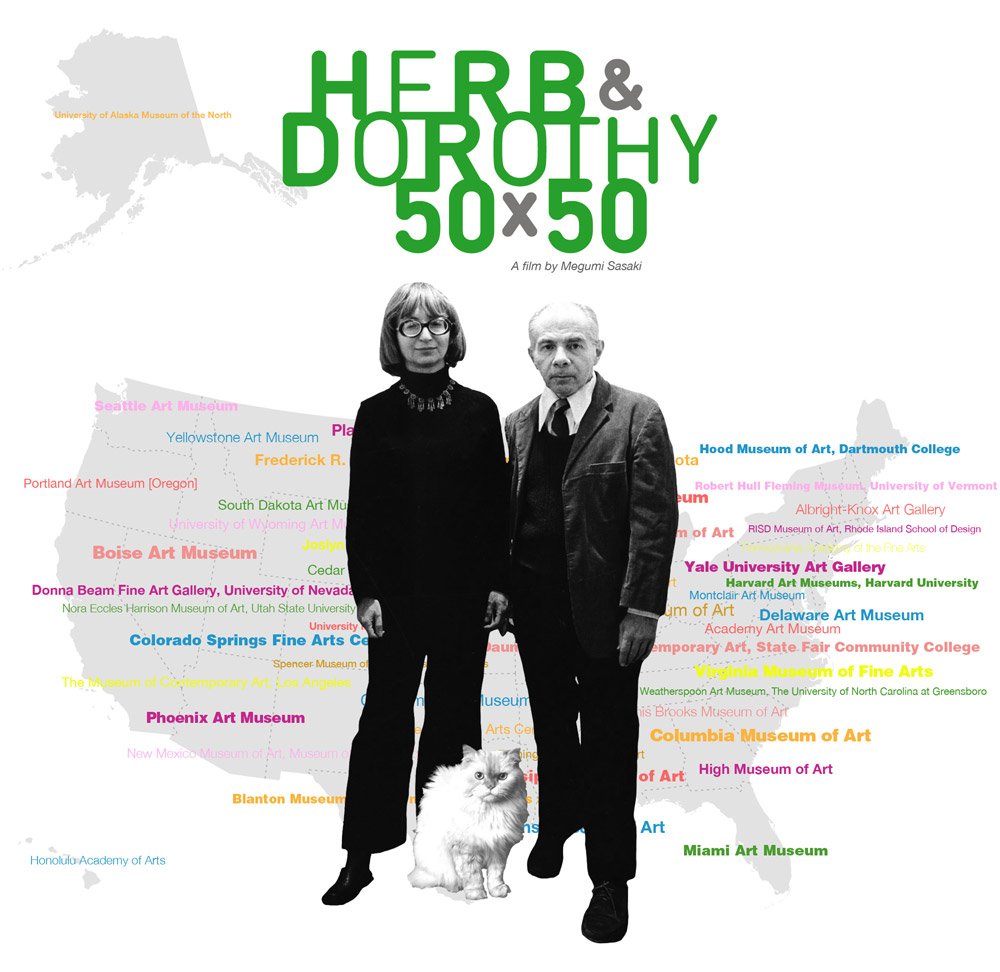Title: Herb & Dorothy 50×50
Director: Megumi Sasaki
Documentaries rarely spawn sequels. And yet five years after “Herb & Dorothy,” a fascinating look at an elderly New York couple who over several decades amassed a massive, world-class collection of minimalist and conceptual art despite their modest means, here’s a follow-up to director Megumi Sasaki’s nonfiction film about both the place of art in modern life and its broader relationship to the proletariat. It’s too cruel to call the pleasant, milquetoast “Herb & Dorothy 50×50” pointless or boring, but in truth it does feel defined more by its inessential nature than any of the updates it provides.
For years, married Brooklynites Herb and Dorothy Vogel lived in a single-bedroom apartment on the latter’s salary as a librarian, while using the former’s earnings as a postal employee to collect thousands of pieces of art. In 1992, though their collected works were now worth millions of dollars, they donated their entire collection to the National Gallery of Art, in Washington, D.C. Sixteen years later, a national gift project called the Dorothy and Herbert Vogel Collection: Fifty Works for Fifty States was conceived. The simple idea, since their collection was too large to ever exhibit at one location, was to bequeath works to museums and art galleries across the nation. Having lived as public servants, the Vogels wanted to share their love of art with citizens across the entire country.
“Herb & Dorothy” had the advantage of surprise, certainly, serving as an introductory snapshot of the Vogels, two characters fascinating in their ordinariness. And yet that movie also had an important hook, forcefully promulgating the theory that art was meant to be lived with, and essential to a meaningful, well-rounded and intellectually stimulating life. “Herb & Dorothy 50×50” would seem ready to plumb that same terrain (after all, what is the very idea of “50×50” but an extrapolation of that philosophy), but while the film does feature some interviews with patrons of the museums that receive the Vogels’ art, Sasaki doesn’t pursue that concept aggressively enough.
Instead, the movie just kind of wanders to and fro, spending time with the Vogels as they travel to various museum installations (Herb, increasingly silent and in poor health, would pass away last summer), querying grateful artists about the Vogels’ status as benefactors, and chatting up equally appreciate museum directors who talk about how they frequently wouldn’t otherwise be able to bring such notable works to their galleries. It lacks a cogent spine, as well as a lot of emotional punch. There are ways a more visually oriented filmmaker could have endeavored to bring the Vogels’ collection to life, but Sasaki eschews the hunt for any inner fire, and the result is a minor chord cinematic riff that lives and dies, moment to moment, by a viewer’s predetermined level of interest in and familiarity with the source material.
Technical: C-
Story: C+
Overall: C
Written by: Brent Simon

